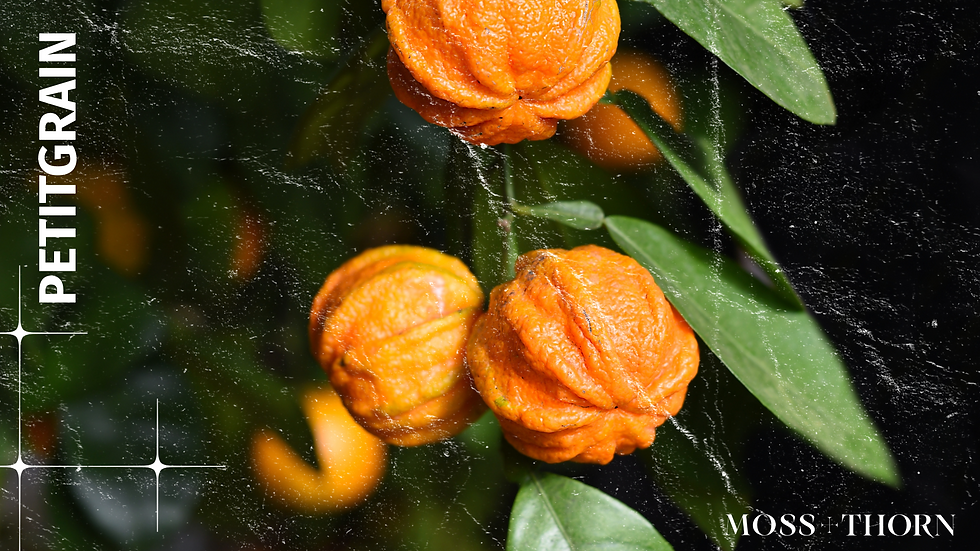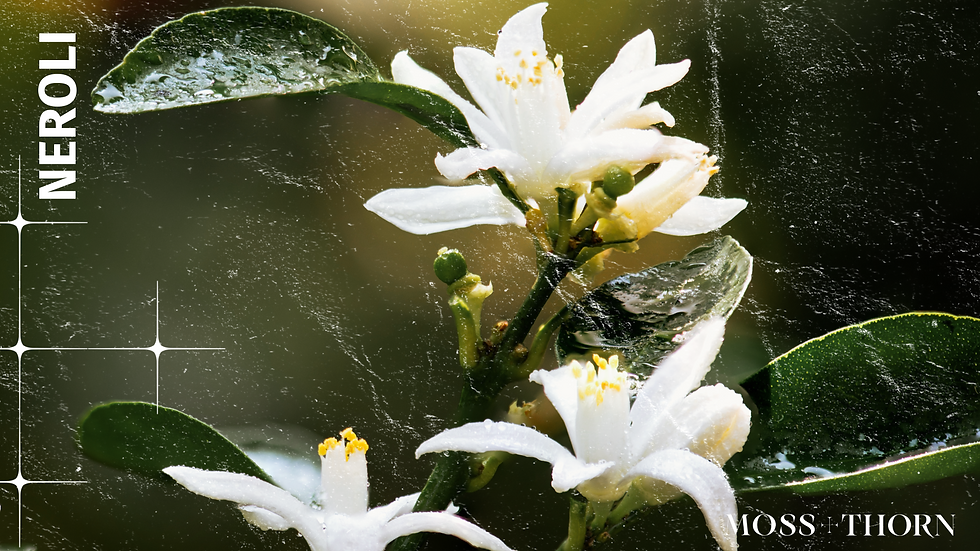Petitgrain
- Sarina Ehrgott
- Jul 7
- 2 min read
Petitgrain is the quiet twin of neroli. Both come from the bitter orange tree (Citrus aurantium), but where neroli is born of the flower, petitgrain is drawn from the leaves and twigs. Steam-distilled from pruned branches, it carries the green clarity of the tree’s breath—not sweet, but sharp in the way morning air is sharp. Its name means “little grain,” from the tiny unripe fruits once used in early distillations.

Cultural Lineage + Ancestral Use
Originating in Paraguay and the Mediterranean, petitgrain has been used traditionally to calm the body and clear the mind. French herbalists turned to it for anxiety, insomnia, and indigestion. In South American practices, it was used as a cooling tonic and a mild antiseptic. As a cousin to neroli and orange, it connects fruit, flower, and leaf—representing the whole tree, not just its bloom.
Medicinal Properties
Petitgrain offers nervous system support—calming without sedating. It’s known for reducing stress, lifting low mood, and improving sleep quality. Used in massage or inhalation, it helps regulate the autonomic nervous system, easing palpitations and shallow breath. On skin, it provides gentle antimicrobial and astringent action—helpful in balancing oily or acne-prone complexions. It’s often used as a safer, milder option in place of more potent citrus oils.
Aroma Properties
Petitgrain smells green and alive—like crushed leaves warmed by the sun. It’s not sweet like orange peel, nor floral like neroli, but carries traces of both. As a top-to-middle note, it opens blends with brightness while adding herbal depth. It’s especially useful in blends intended for clarity, energy clearing, or emotional restoration. Alone, it brings focus without tension—a scent for steadiness and breath.


